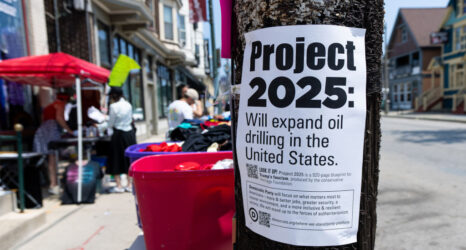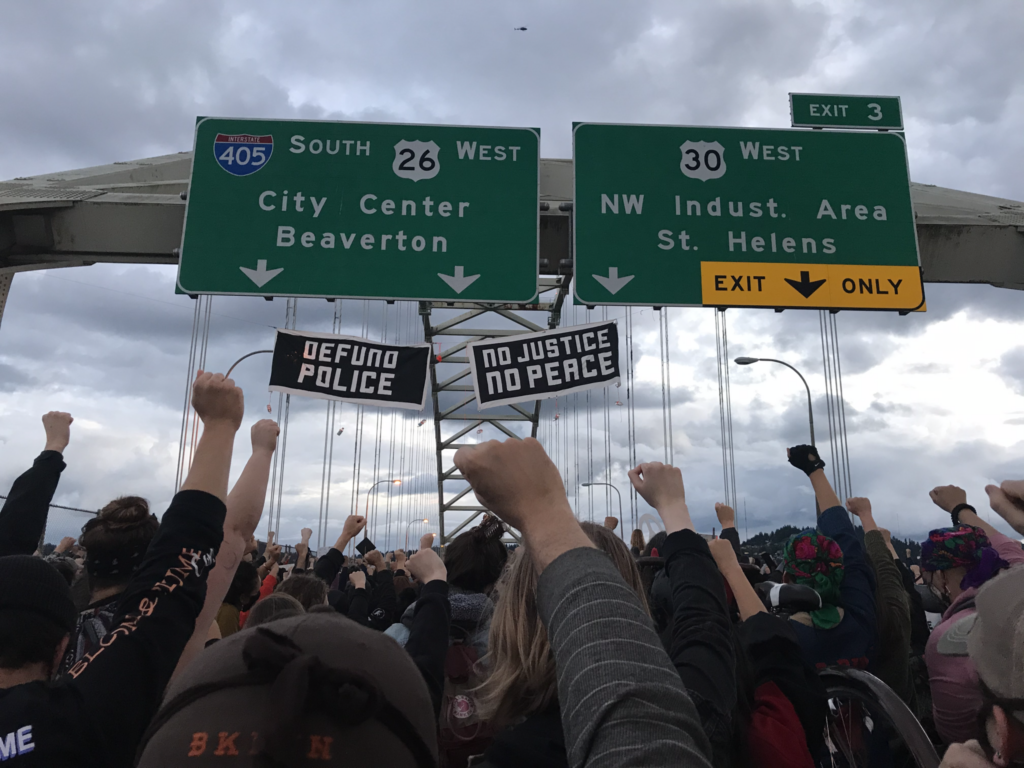
You’ve probably seen the images on TV or social media or in the newspaper: Portland is in chaos. Portland is being destroyed nightly by rioters and looters. According to right wing media, Portland needs federal intervention because local officials have lost control of the city. Images of graffiti and boarded-up businesses paint Portland as a bellwether for the spread of urban unrest across the country.
Elsewhere in the press and across social media, videos clips of flower-toting moms and leaf-blowing dads tell another kind of story about Portland—one that heralds these mostly white parental figures as defiant heroes.
These competing media portrayals confuse and frustrate those of us watching from the outside. Looking to discern myth from reality, each of us visited the epicenter of the Portland protests to see for ourselves.
Collectively processing what we observed, we’ve identified five myths that we can debunk through our own personal experiences at the site, the testimony of those long engaged in the struggle against racism in Portland, and an intersectional feminist analysis of what is unfolding on the ground.
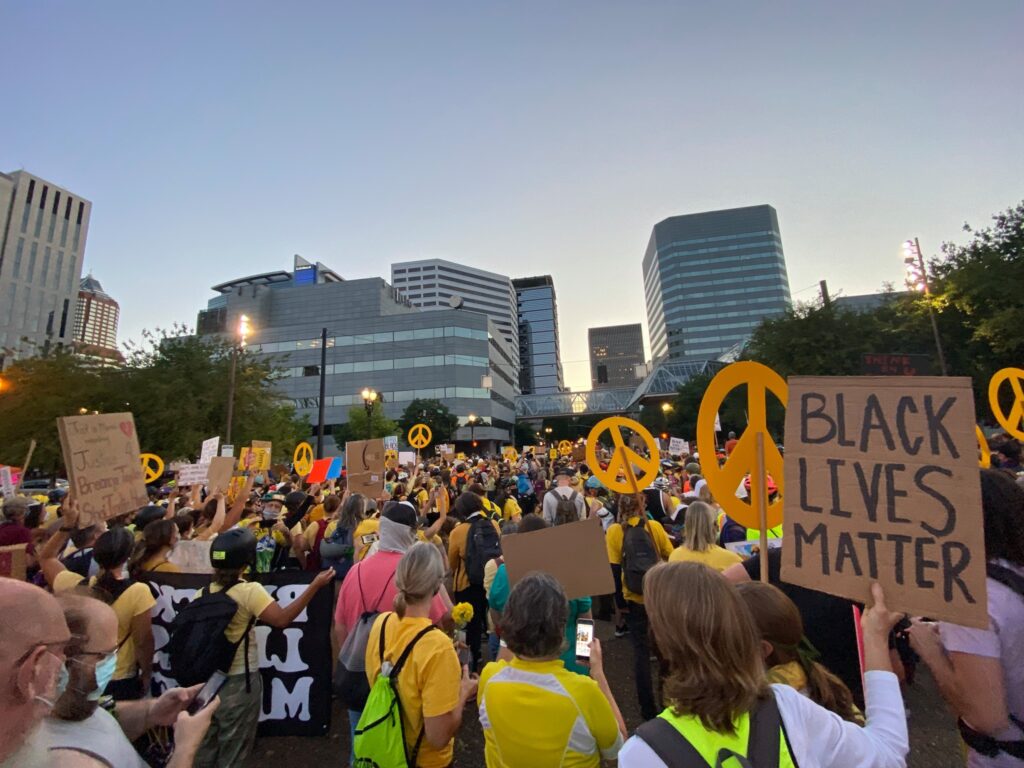
While Andie has been a regular at the protests since they began in May, the rest of us traveled to Portland this week from our college town about seventy miles to the south. What we found surprised us:
Portland looks like, well, Portland.
It is not being destroyed as right-wing pundits and the president allege. Save for the frenzy of activity near the Justice Center, the city looks like it does during a typical summer.
Of course, this is not an ordinary summer due to the ongoing COVID-19 pandemic. The counties comprising the Portland metro area are some of the hardest hit in Oregon. Traffic seemed lighter. Fewer light rail trains passed by. Some normally bustling hotels, shops and restaurants were closed. The tandem effects of COVID-19 and ongoing unrest have interrupted business as usual near the protest site.
Andie, Cari and Emily met at the starting point for the “Wall of Moms” march where they walked with several hundred moms, many holding Black Lives Matter signs written on diaper boxes, to join the rest of the protesters. Susan traveled to Portland during the day to snap photos of the protest site and reconnect with the city where she and her partner once lived.
The photos and reflections we share here come from our firsthand observations and seek to debunk, in a small way, some of the prevailing myths about what is happening in Portland.
Myth 1: Portland is burning. Protests are destroying the city.
Fact: Portland’s infrastructure is fine.
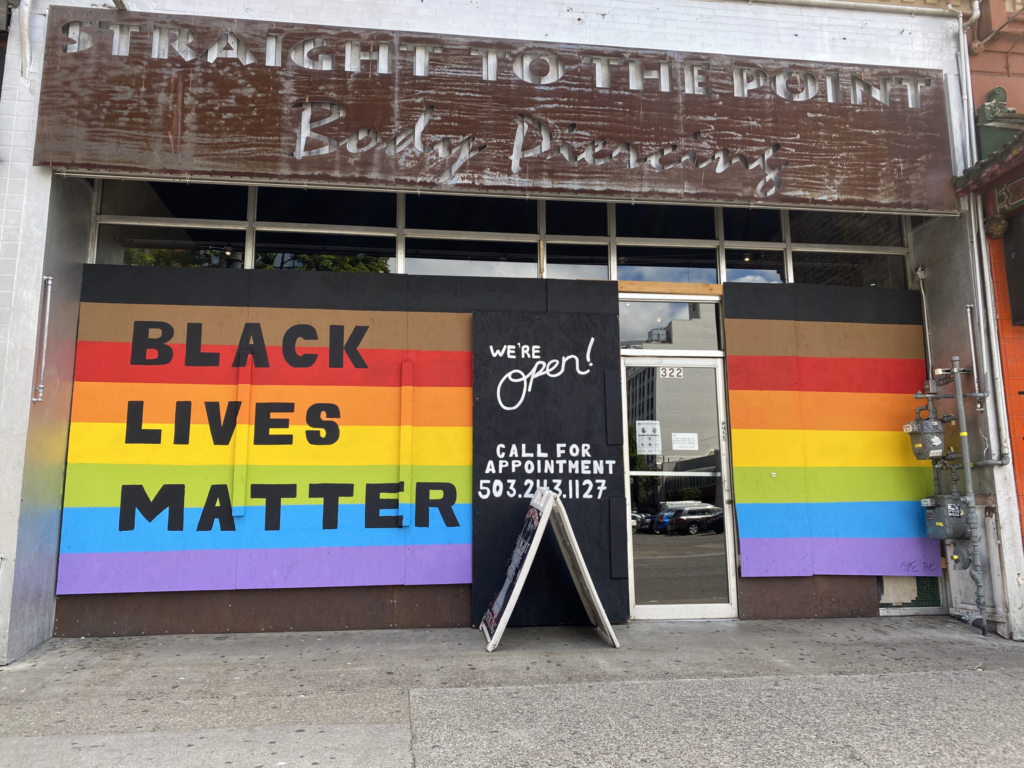
A block or two in every direction from the courthouse, life goes on—Starbucks is open. There was a huge farmers market on the Park Blocks. Portland’s famous food carts were serving up lunch. Many businesses display signs supporting BLM, having asked artists to create murals for them.
The media have made people afraid of downtown Portland for no reason. Susan’s own mother keeps telling her (from Georgia) how she’d better stay out of Portland. It’s too dangerous there. It’s being destroyed. On Fox News, Tucker Carlson said, Portland is a “beautiful city destroyed by the mob.” This serves Trump’s narrative about the need for law and order—which allows him to militarize the police and expand state military presence.
Protesters do light fires in the area. None of them has caused significant damage. Meanwhile, millions have been spent on law enforcement: More than 200 thousand taxpayer dollars have gone to build fencing around the courthouse, some of which has been faulty and easily dismantled.
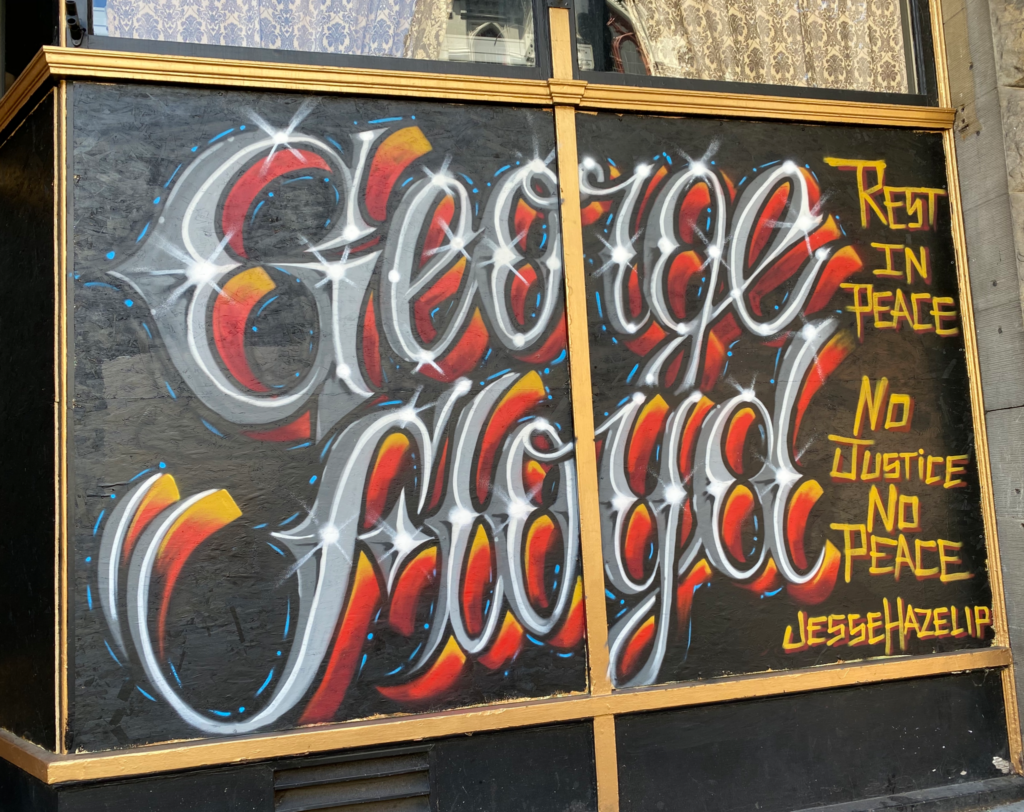
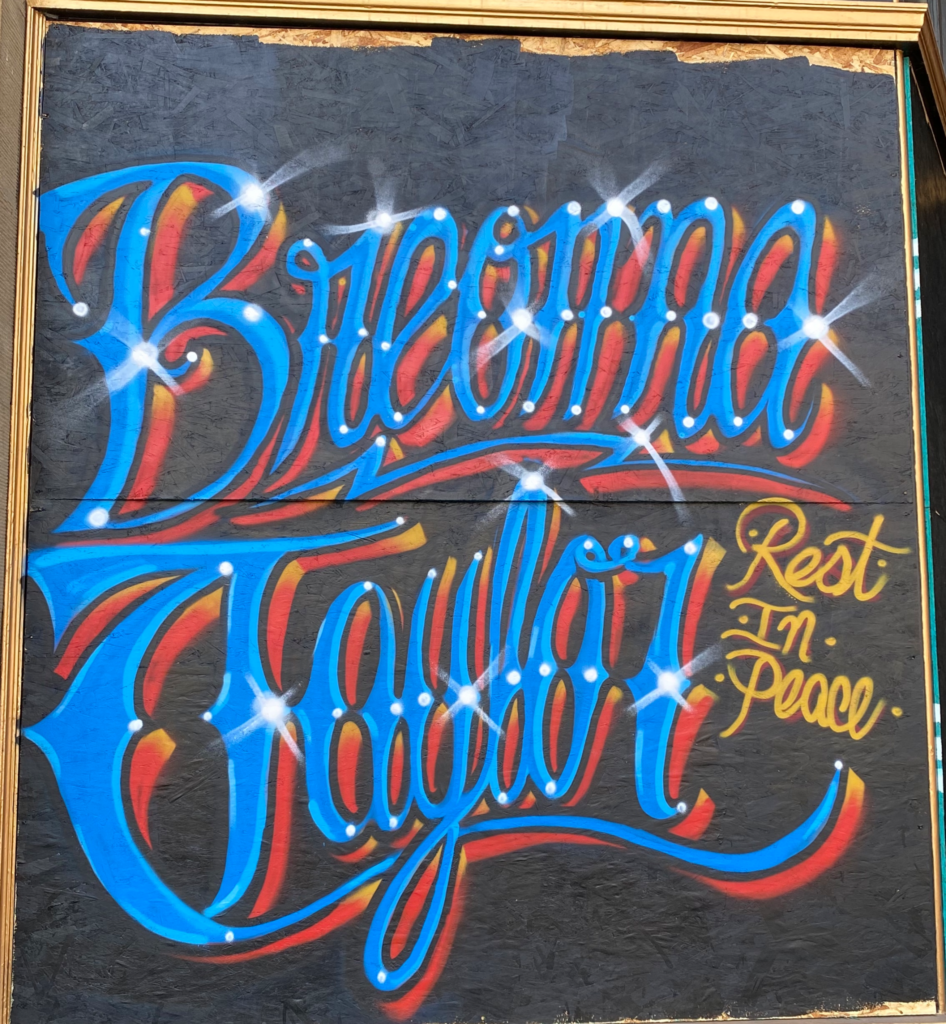
Myth 2: Protesters are a mob.
Fact: Protesters are well-organized—albeit decentralized.
We were greeted with music and dancing. Free ribs are served to those who show up. Everyone, with very few exceptions, wears masks. Volunteers walked through the park handing out water bottles; a group passed with a push cart full of helmets and safety goggles for those who might have come unprepared.
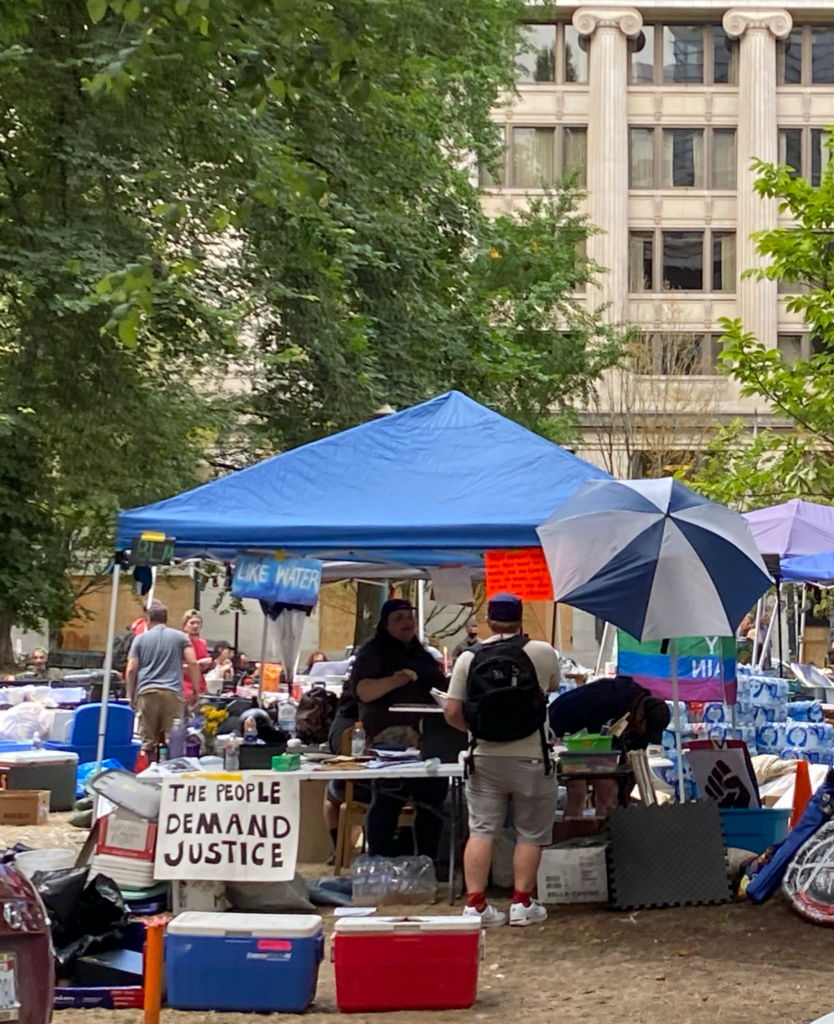
Experienced protesters are strategically stationed through the area to help show newbies where to go when the federal officers start spraying their tear gas and to pull them safely from the crowd. Everywhere people are checking in on one another: Does the veteran in the wheelchair need more space? Does the dad giving his kids a history lesson need a break?
We hear singing and chanting and see a laser light show. When the federal agents started to spray tear gas and explode flashbangs over the park, someone in the audience began blasting Star Wars’s “The Imperial March’ at high volume. Amidst the anger at the police was also a spirit of joy, humor and people working through conditions of violence to build camaraderie.
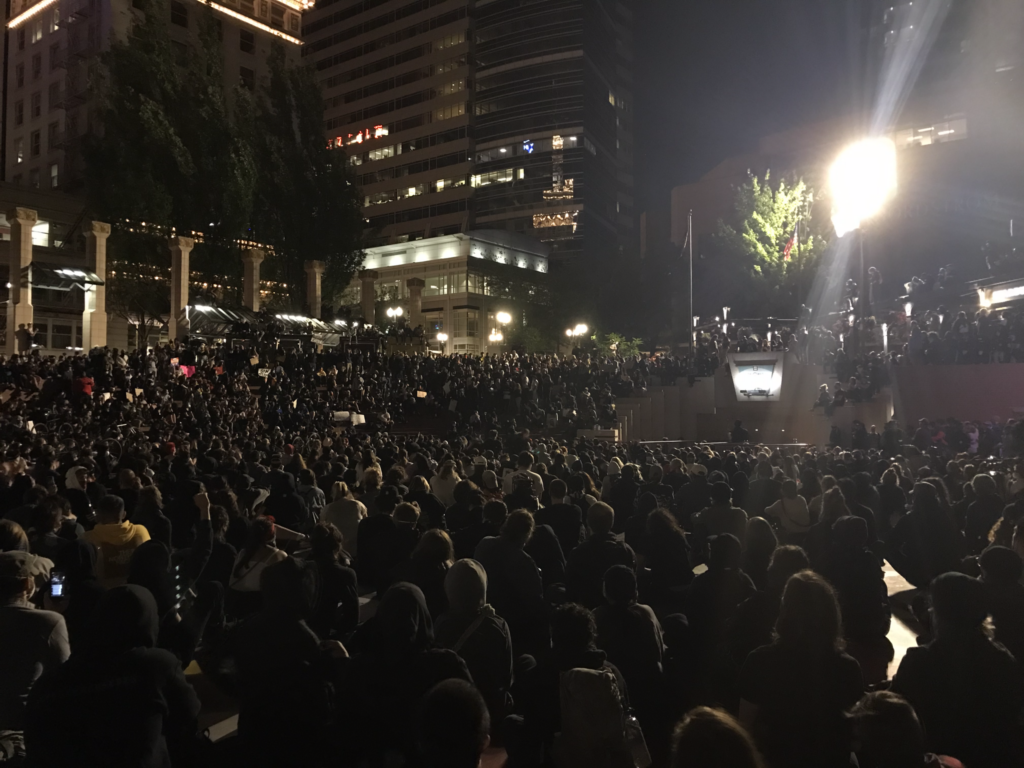
While people have protested at the Justice Center every night since George Floyd was murdered, multiple vigils, protests and actions have happened all over the city, often ending by marching to join the protest at the Justice Center. These community-building actions have allowed multiple marginalized people to share their experiences with neighbors and begin conversations about social transformation.
Myth 3: White protesters are the story!
Fact: Black community activism is the story.
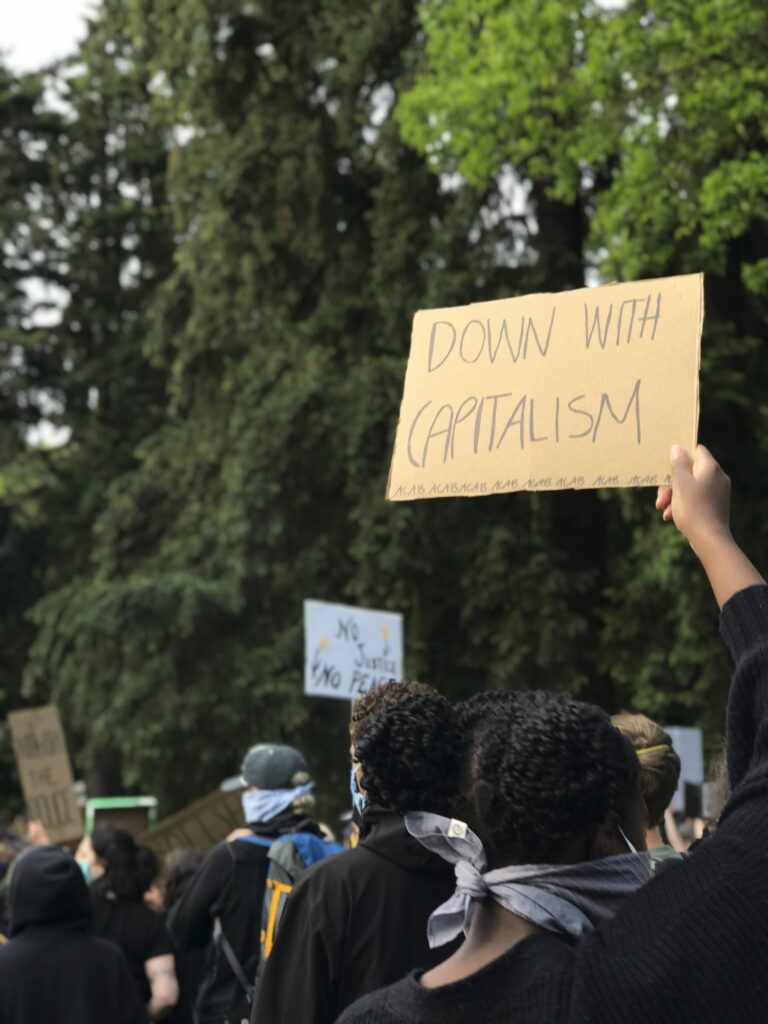
In a Facebook post, Portland activist Walidah Imarisha reminded us that these protests must keep Black lives on center. Too easily, the narrative of white moms (and dads) can shift the focus to white people. Note the recent media attention on the wall of moms and leaf blower dads.
Imrisha writes, “Using your privilege in support of justice is a powerful tactic, as long as you realize the end goal is the elimination of that privilege, and that you are not the center.”
She adds:
Black mothers have been leading this work for decades and never received anywhere near the level of response like the Wall of Moms (because of the ways Black people, Black women, Black mothers have been criminalized and vilified).
Black people and other people of color do not need white saviors; in fact our movements have always been the ones creating more justice for everyone. The white mothers doing this tactic need to be aware they are using the racist myths of purity/sanctity of white womanhood/motherhood, and if they aren’t consciously and always pushing against it, they will be sucked into that narrative.
Late last week, Wall of Moms announced that in recognition of the problem of white women leading a group whose goal is Black liberation, the white administrators had relinquished their roles and Black and Indigenous women are now the administrators of the Wall of Moms.
Though Portland is an overwhelmingly white city, Black people and communities of color do much of its social justice organizing. In conjunction with the protests, local Black organizers have been educating the public on the history of activism against police brutality in Portland, and the structural ways in which the system has continually reproduced itself. Black community leaders at the protest have taught about local practices of gentrification and redlining and have marched protesters through sites where unarmed Black community members have been killed by police.
The heteronormative images of white moms and dads also overshadow the work of Black and other non-white LGBTQ+ activists. Leaders of these groups continue to push other protesters to include gender-diverse, queer and trans experiences with police violence in the wider movement.
The popular media narratives have also ignored the contributions of disability activists, like American Sign Language interpreter Andrew Tomlin, who have worked to make the revolution accessible.
Myth 4: The newly arrived feds are the problem.
Fact: The Portland police department has been using excessive force against protesters since daily protests began in May.
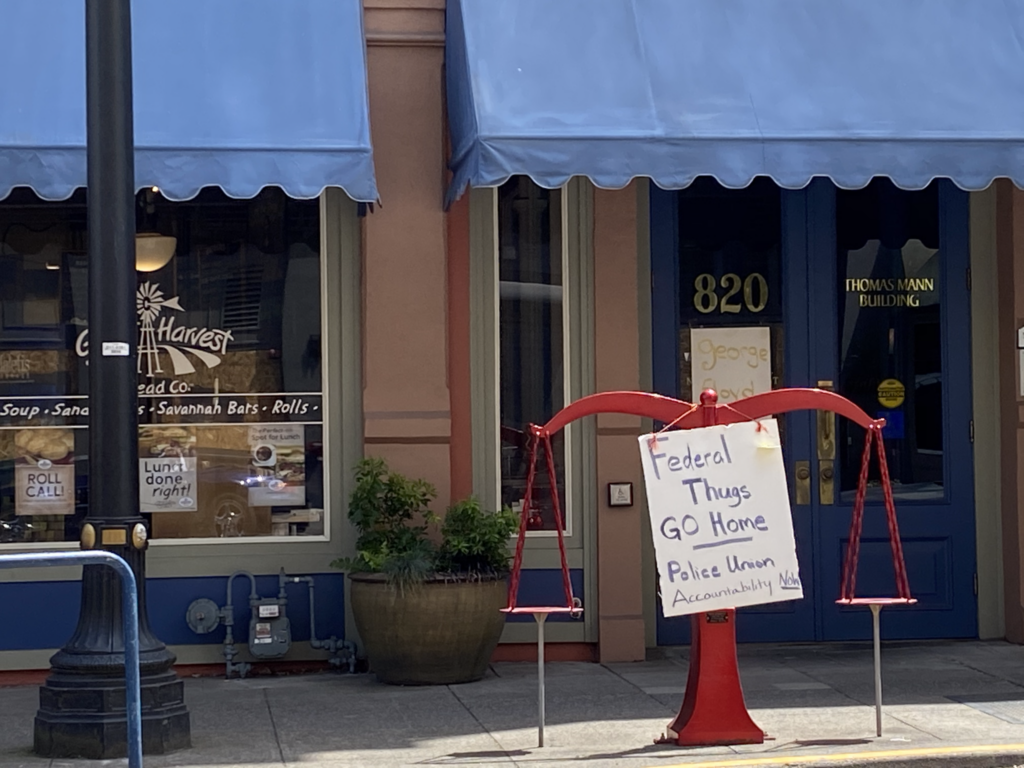
In the past week, federal officers have thrown tear gas at journalists and bystanders, ruined medic supplies with pepper spray, swept up pedestrians in unmarked vehicles, arrested protesters without reading them their rights, and critically injured people present. We were simply standing in the park when federal officers circled in from all sides, spraying tear gas over the area just after 11 p.m. This is how it now is, night after night.
But as independent journalist Tuck Woodstock reminds us, the Portland Police Department (PPD) had used excessive force against protesters long before the federal police arrived.
A concrete demand since the beginning of the protests is a $50 million reduction in funding allocated to the PPD—a response to the roughly $37 million increase seen in general funds of the police bureau under the tenure of current Mayor Ted Wheeler (2015-2020).
On June 17, the Portland City Council voted to reduce the police bureau’s budget by only $15 million—eliminating 84 positions, of which 50 are rolling vacancies.
After 15 days and nights of Black Lives Matter actions, 742 community testimonials to the city council and more the 64,000 residents writing to council members advocating for defunding, the failure of the council to heed the will of the people re-invigorated the protests.
Don’t Shoot PDX, a Black-led, community action organization, has been working against police brutality since 2014. In June, Don’t Shoot PDX successfully sued the Portland Police Bureau, gaining a restraining order against the use of a powdered form of tear gas on protesters.
The organization’s founder, long-time social justice activist, Teressa Raiford, points to Portland’s long anti-Black heritage: “It is a power struggle to maintain whiteness and white supremacy that dictates the policy here.”
She’s not surprised by police violence at the protests: “You still wonder why you’re getting your ass whooped at Black Lives Matter protests? Because you’re standing up for Black people in Whitelandia!”
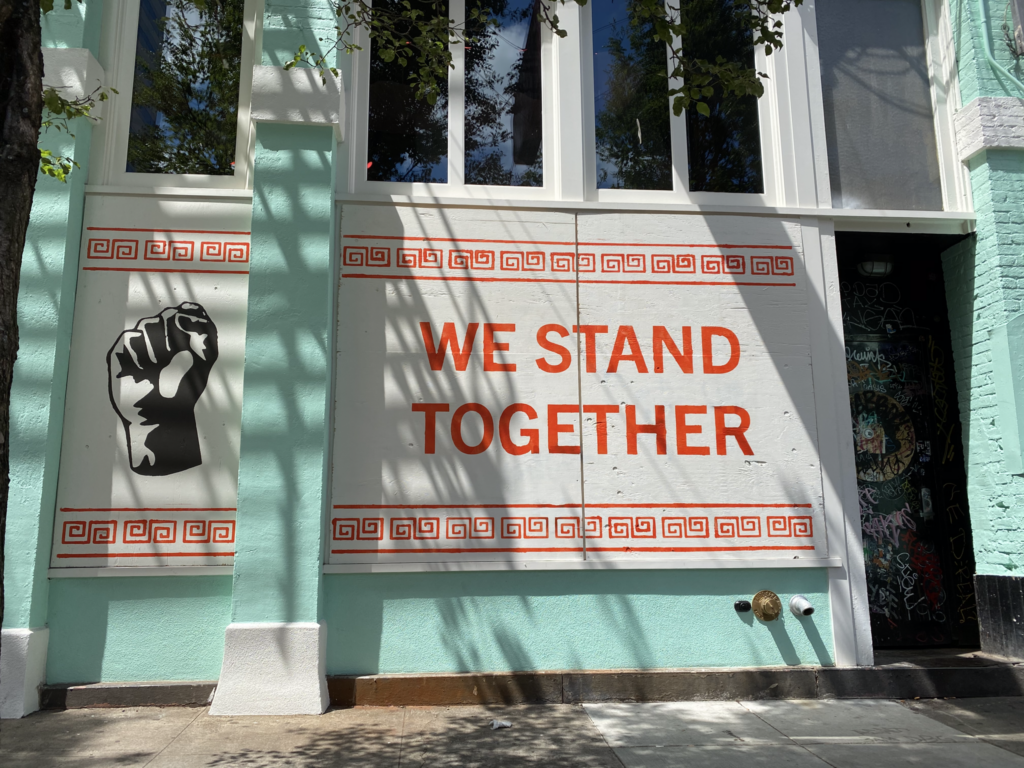
Myth 5: Protests will be over soon.
Fact: Protests are growing.
“We very much quelled it, and if it starts again, we’ll quell it again very easily. It’s not hard to do, if you know what you’re doing,” Donald Trump said at a press briefing on July 13.
Yet, everyday more groups join. This week, the Wall of Moms and PDX Dad Pod were joined by the Wall of Vets—a group of veterans deeply disenfranchised by the local and federal police’s violations of human rights occurring against the protesters assembling. Yesterday, a group of elderly women known as the Portland Raging Grannies made an appearance.
The Grannies are part of an international network who promote peace and justice through song and humor. Union members, teachers, chefs, healthcare workers and lawyers have joined as occupational groups to support the protest.
The Portland Interfaith Clergy Resistance, led by Rabbi Ariel Stone, also provides a clerical presence each night to bear witness and offer support to protesters. Rev. Tara Wilkins explains, “We’re bringing the moral voice to the street.”
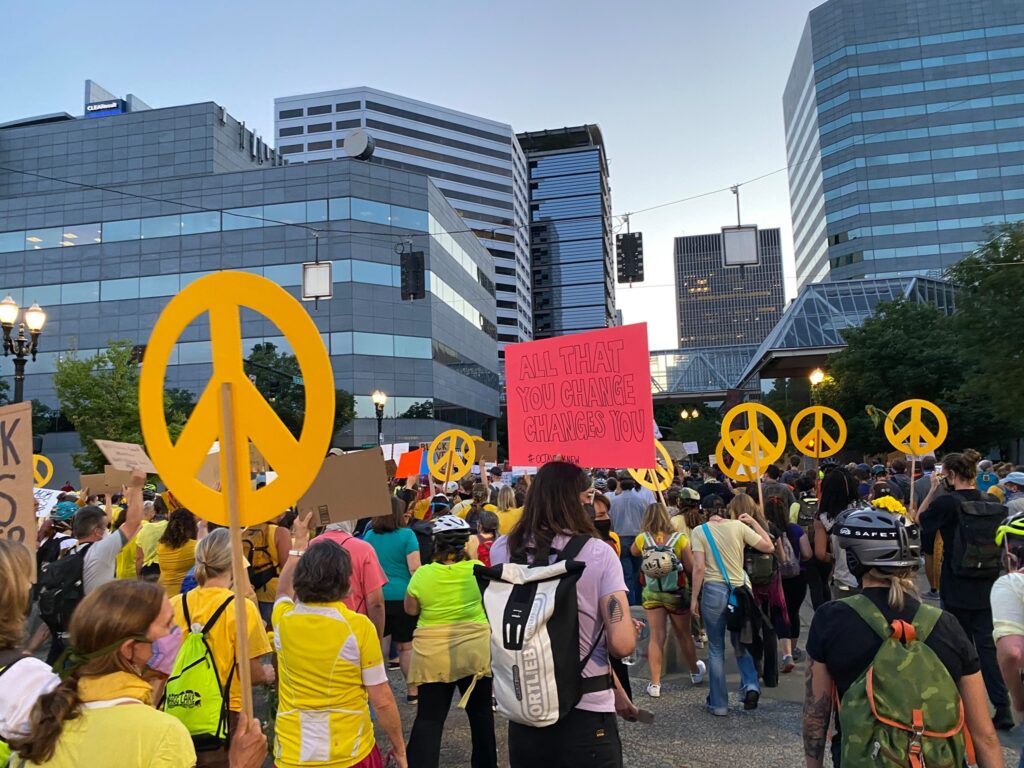
A powerful, intersectional alliance for racial justice has formed through the protest. Mainstream media representations have mostly erased the diversity of this coalition or shifted the focus to white participation in the protest.
The reality on the ground, however, is that the fight in Portland is one for Black liberation, led by Black activists and supported by a broad swath of the community.




